SAP® S/4HANA for Waste and Recycling by PROLOGA

Introduction
The waste disposal and recycling industry is a complex ecosystem demanding efficiency and precision at every turn. PROLOGA emerges as a powerful game-changer, seamlessly integrating with SAP® S/4HANA to empower waste management companies. This blog delves into the core functionalities of PROLOGA, with a particular focus on its weighing capabilities.
We’ll explore how it simplifies and automates the weighing process across various scenarios, ensuring accurate data capture and transparent billing practices. If you’re a waste management professional seeking to optimize operations and elevate efficiency within your SAP® S/4HANA environment, then PROLOGA is a solution worth exploring.
Overview of PROLOGA
PROLOGA is a new add-on which extends SAP® S/4HANA for Utilities to support processes and requirements of waste disposal and recycling companies. SAP S/4HANA for waste and recycling provides with a wide-ranging customer care, service, logistics, and billing system that can be fully integrated in standard business software.
The SAP S/4HANA-enabled core components of the industry solution include the waste-specific master data and order management, the billing integration, the weighbridge application, as well as logistics and financial completion. The integrated usage of SAP S/4HANA for waste and recycling can provide the company with decisive advantages in the increased liberalization of the worldwide waste disposal markets and the constantly increasing competition.
Significance of Weighing in SAP PROLOGA
The process starts with the allocation of container in the particular service address where the service is to be executed. Then, the waste disposal order for the specific service requirement is created. Assignment of waste disposal orders items to the required vehicle is performed in the planning. Allocation of waste disposal order items to the existing orders can also be performed in the internal execution.
Once the truck returns to the waste disposal facility after the collection of waste, an internal weighing transaction is executed at the facility to capture the net weight, gross weight, split / deduction in the waste. After the adjustments to the weighing transaction, it is marked as complete to generate the material document which is posted in the inventory. Goods receipt of waste stream to site is followed by sorting and splitting of waste. Then, the waste disposal order is confirmed for the generation of debit memo request for which debit memo can be created.
Multiple Item Weighing – Weighing Transaction
The multiple items weighing supports in capturing weight of the items per weighing transaction for the materials delivered to a waste disposal facility or materials being removed from a waste disposal facility. Additionally, the yard list provides a direct access to all weighing transactions for which an inbound weighing is already saved in the system. The yard list also represents the corresponding vehicles that are currently on the yard.
Types of Weighing Transactions
There are 4 types of weighing transactions that can be created via the transaction.
- Internal Delivery
- External Delivery
- Internal Outbound
- External Outbound
1. Internal Delivery
Internal delivery represents the scenario of recording the weight once the waste is collected and transported into the facility / site.
The process is initiated by the creation of Waste Disposal Order after the allocation of container. Then, planning is carried out in which the orders are allocated to particular fleet along with the route. Once, the truck with the collected waste reaches the site, the weighing that happens in the site is recorded into the system as Internal Delivery.
The transaction to perform the weighing transaction is EWAWA_MULTI. Upon selecting the respective waste disposal order and the sequence number, the license plate gets copied from the fleet, waste and waste disposal facility gets copied from the waste disposal order.
Gross weight, Tare weight can be entered manually or automatically triggered from the integration of weighbridge (once the setup is installed) which thus calculates the net weight.
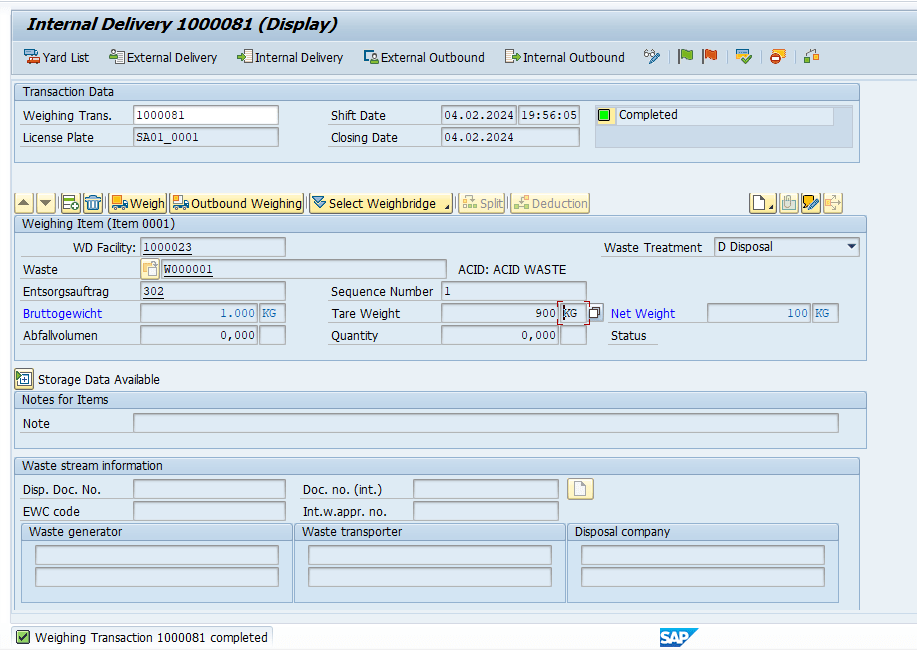
Upon saving the weighing transaction, it gets saved in the yard list. The weighing transaction is to be completed for the generation of material document.
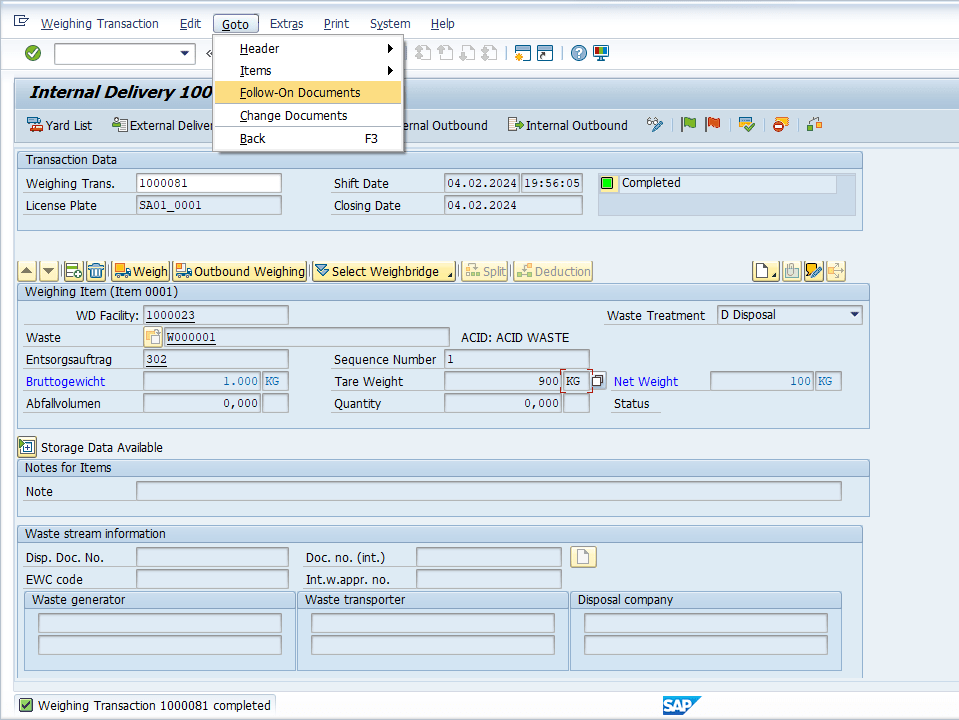
The material document thus generated can be viewed in Goto -> Follow-On documents.

Material Document generated:
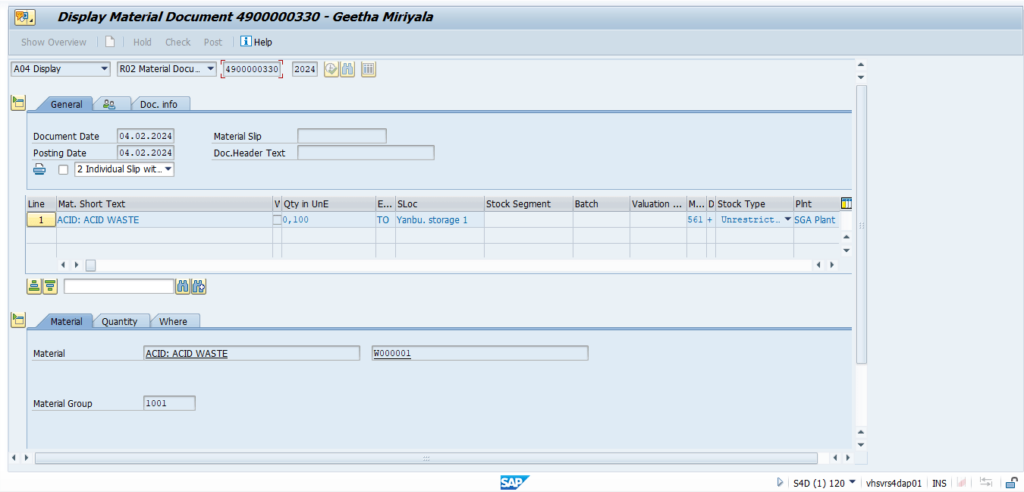
2. Internal Outbound
Internal outbound represents the scenario of recording the weight if the waste that is collected is to be transported into another facility / site by using the transportation facility.
The process is initiated by the creation of Waste Disposal Order. Then, planning is carried out in which the orders are allocated to particular fleet along with the route. The weighing that happens in the site once the waste is loaded into the truck for the transport is recorded into the system as Internal Outbound.
The transaction to perform the weighing transaction is EWAWA_MULTI. Upon selecting the respective waste disposal order and the sequence number, the license plate gets copied from the fleet, waste and waste disposal facility gets copied from the waste disposal order.
Gross weight, Tare weight can be entered manually or automatically triggered from the integration of weighbridge (once the setup is installed) which thus calculates the net weight.
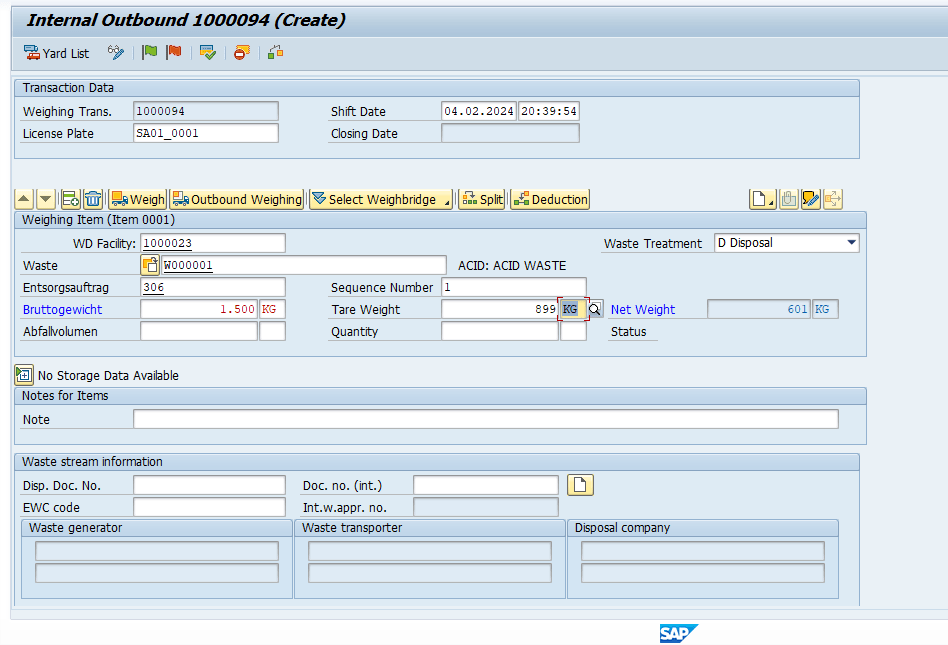
Upon saving the weighing transaction, it gets saved in the yard list. The weighing transaction is to be completed for the generation of material document.
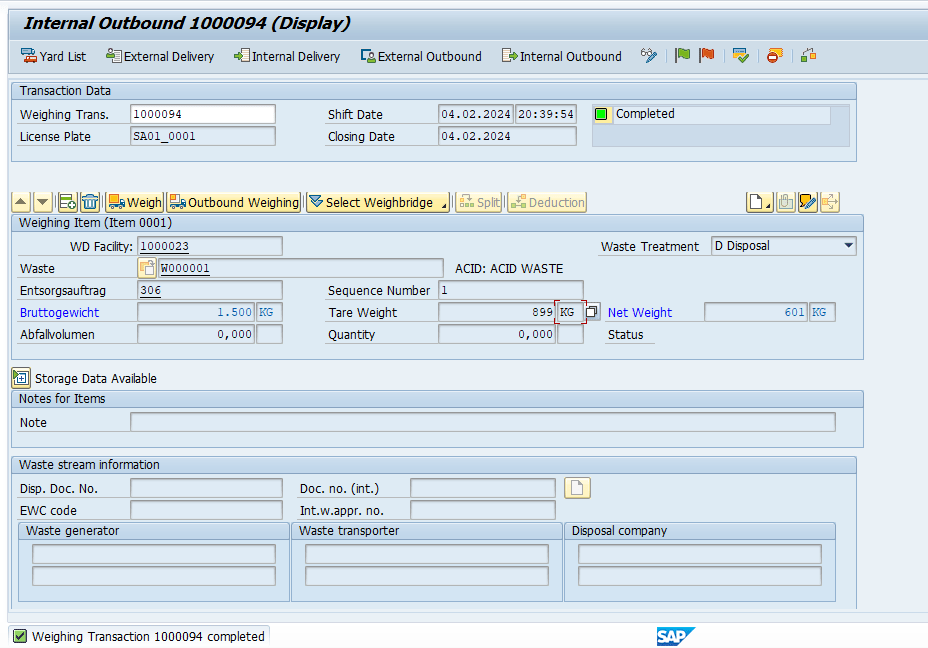
The material document thus generated can be viewed in Goto -> Follow-On documents.
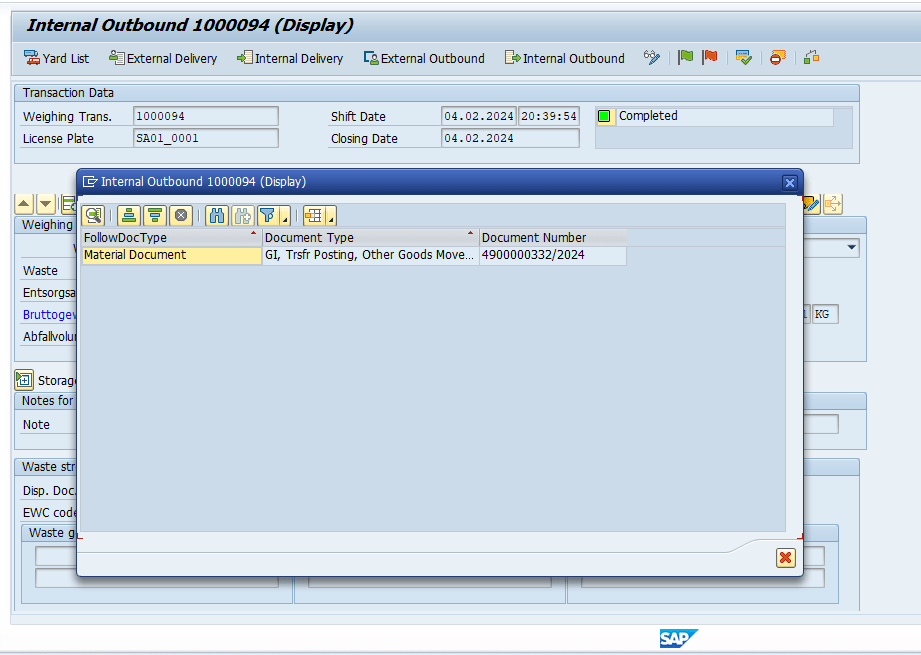
Material document generated:
3. External Delivery
External delivery represents the scenario of recording the weight if the waste is collected and transported by the customer using his own fleet to the site.
The process is initiated by the creation of Sales Contract. Once customer fleet has arrived the site, weighing that happens for further processing in the site is recorded into the system as External Delivery.
The transaction to perform the weighing transaction is EWAWA_MULTI. Upon selecting the respective sales contract and the item, the waste gets copied from the contract. License plate and the waste disposal facility is to be selected.
Gross weight, Tare weight can be entered manually or automatically triggered from the integration of weighbridge (once the setup is installed) which thus calculates the net weight.
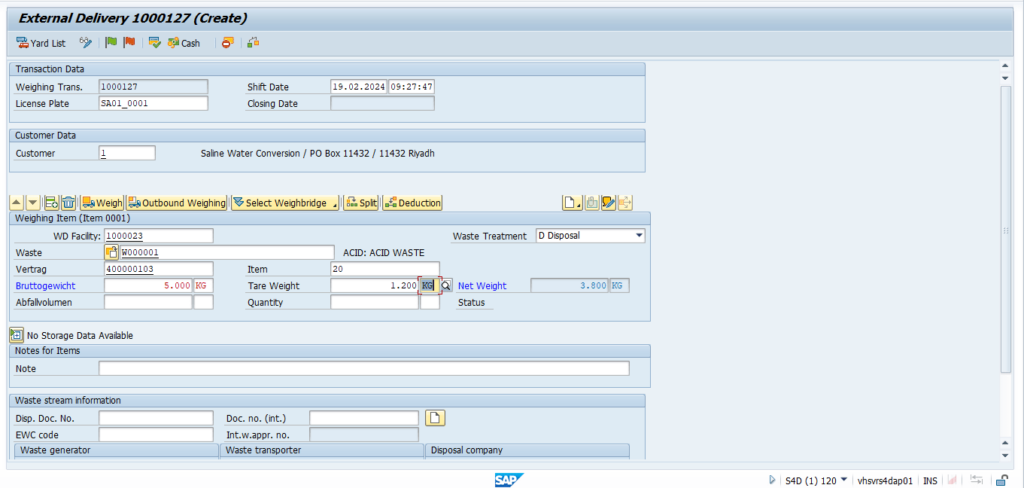
Upon saving the weighing transaction, it gets saved in the yard list. The weighing transaction is to be completed for the generation of material document and debit memo request.
The material document and debit memo request thus generated can be viewed in Goto -> Follow-On documents.
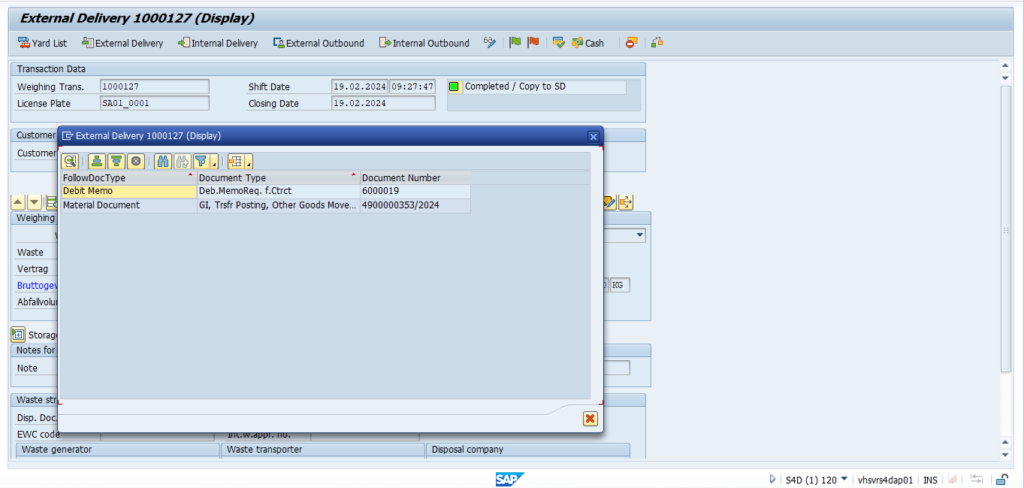
Debit Memo Request generated:
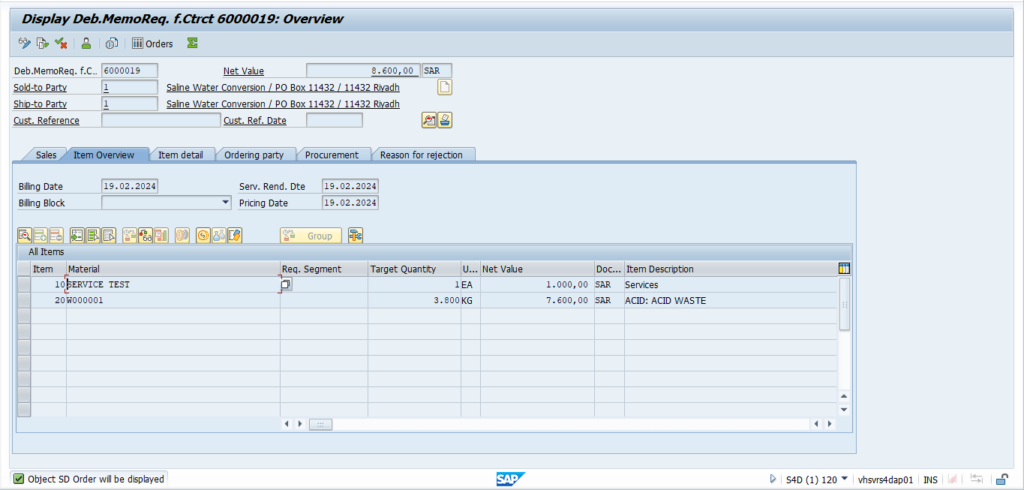
Material Document generated:
4. External Outbound
External outbound represents the scenario of recording the weight if the waste that is collected is to be transported to other facility by the customer using his own fleet.
The process is initiated by the creation of Sales Contract. Once customer fleet has arrived the site to transport the waste to other site, weighing that happens for further processing is recorded into the system as External Outbound.
The transaction to perform the weighing transaction is EWAWA_MULTI. Upon selecting the respective sales contract and the item, the waste gets copied from the contract. License plate and the waste disposal facility is to be selected.
Gross weight, Tare weight can be entered manually or automatically triggered from the integration of weighbridge (once the setup is installed) which thus calculates the net weight.
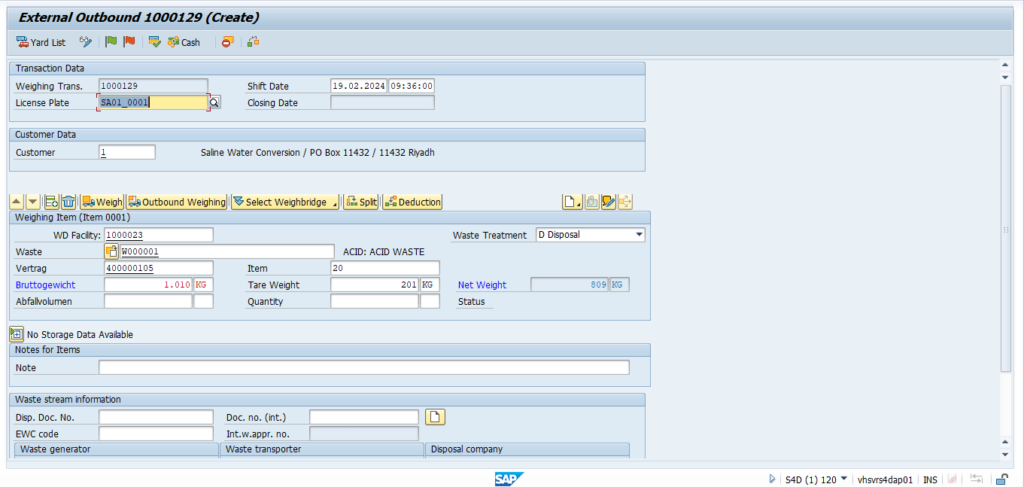 Upon saving the weighing transaction, it gets saved in the yard list. The weighing transaction is to be completed for the generation of material document and debit memo request.
Upon saving the weighing transaction, it gets saved in the yard list. The weighing transaction is to be completed for the generation of material document and debit memo request.
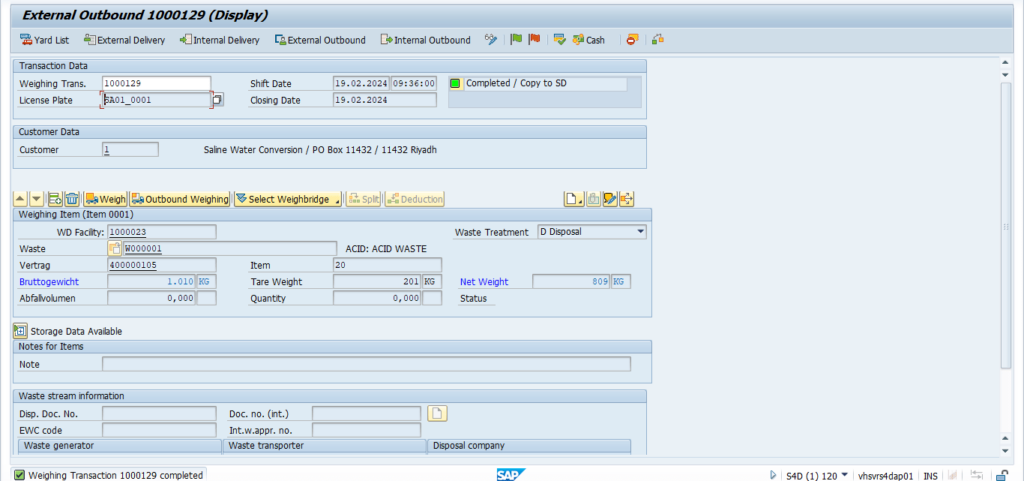
The material document and debit memo request thus generated can be viewed in Goto -> Follow-On documents.
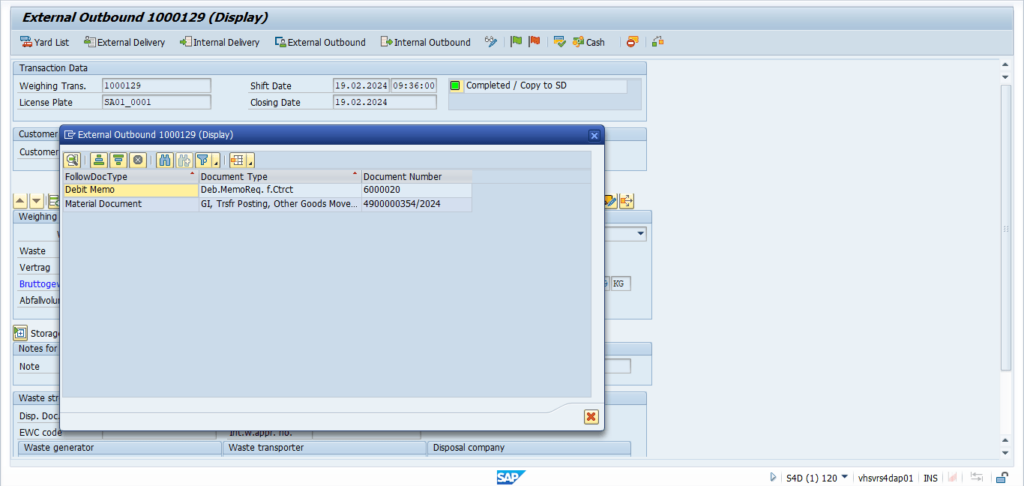
Debit Memo Request generated:
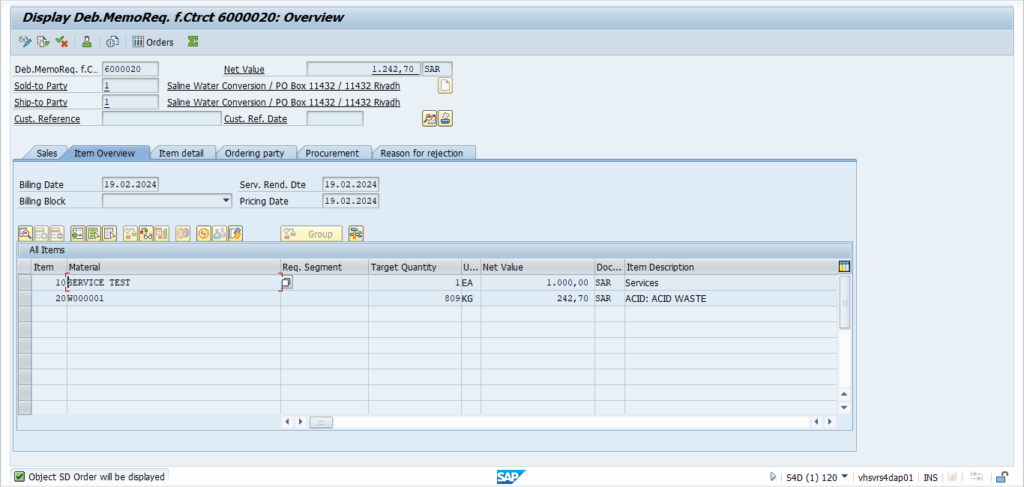
Material Document generated:
In conclusion,
SAP PROLOGA presents a transformative solution for waste management, seamlessly integrating with SAP® S/4HANA for Utilities to meet industry demands. Its advanced weighing capabilities simplify operations, ensure accurate data capture, and promote transparent billing practices. Whether for internal or external deliveries, inbound or outbound shipments, PROLOGA boosts efficiency across the board. Waste management professionals can optimize operations within their SAP® S/4HANA environment, driving profitability and sustainability. As the waste management landscape evolves, PROLOGA remains an innovative ally, empowering organizations to navigate complexities effectively.
If you have any queries or need guidance, feel free to reach out to us at KaarTech.
FAQ’s
What is PROLOGA?
It is an add-on for SAP® S/4HANA for Utilities, tailored for waste management companies, enhancing processes like customer care, logistics, and billing.
How does PROLOGA simplify weighing processes?
It automates weighing tasks for waste disposal orders, capturing net weight, gross weight, and deductions, ensuring accuracy and transparency.
What types of weighing transactions does PROLOGA support?
It supports multiple types of weighing transactions, including internal and external deliveries, inbound and outbound shipments, for efficient waste management.
How does PROLOGA integrate with SAP® S/4HANA?
It seamlessly integrates with SAP® S/4HANA for Utilities, leveraging its core components for waste-specific master data, order management, billing, and logistics.




